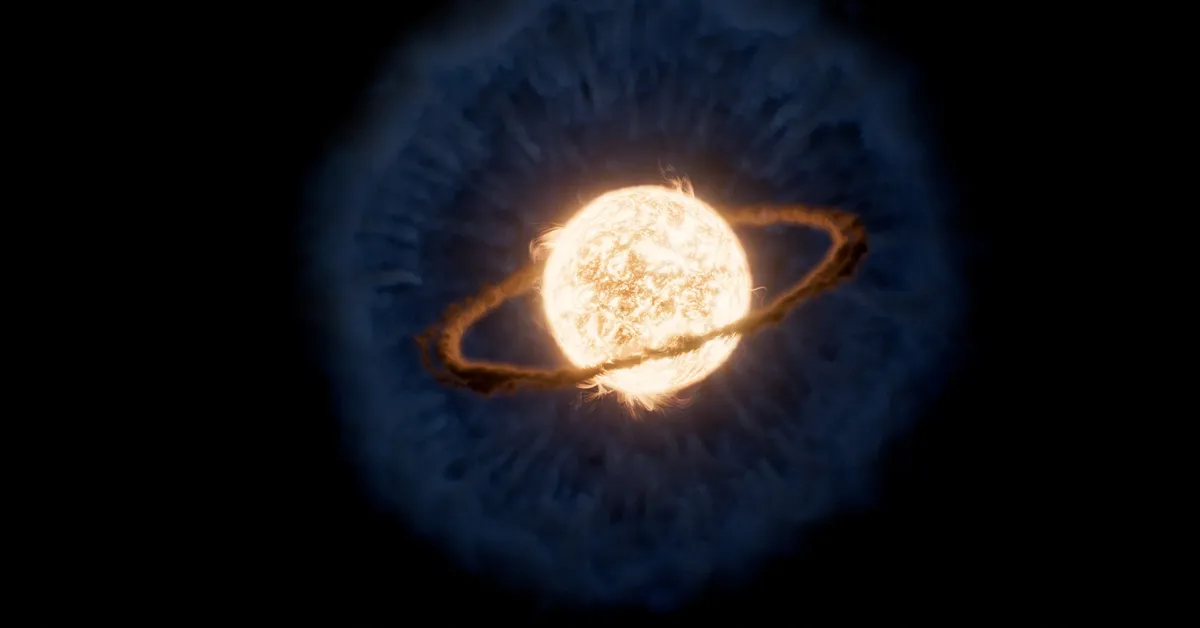
In May 2020, astronomers made a remarkable discovery, marking the first time a planet was observed being consumed by its host star. Initially, scientists believed that the planet met its tragic end as the star expanded during its later life stages, transitioning into a red giant. However, recent observations from the James Webb Space Telescope have provided new insights, revealing that the planet's demise occurred in a manner different from earlier assumptions.
The James Webb Space Telescope, launched in 2021 and operational by 2022, conducted what can be described as a postmortem examination of the cosmic event. Findings suggest that rather than the star expanding to engulf the planet, it was the planet that spiraled toward the star, leading to its catastrophic end. Researchers reported that this "death plunge" resulted from a gradual erosion of the planet's orbit over time, which ultimately led to disastrous consequences.
The aftermath of this celestial event was both dramatic and visually striking. The James Webb Space Telescope captured images of hot gas likely forming a ring around the star after the incident, alongside an expanding cloud of cooler dust that enveloped the area. This star is located approximately 12,000 light-years away from Earth, in the direction of the constellation Aquila. For context, a light-year is the distance that light travels in one year—equating to about 5.9 trillion miles (9.5 trillion km).
The star involved in this cosmic drama is slightly redder and less luminous than our Sun, comprising around 70% of its mass. The planet that was engulfed is believed to belong to a class known as hot Jupiters—gas giants that exist at high temperatures due to their close proximity to their host star. Morgan MacLeod, a postdoctoral fellow at the Harvard-Smithsonian Center for Astrophysics and co-author of the study, noted that the planet must have been a giant, at least a few times the mass of Jupiter, to cause such a significant disturbance to the star.
Researchers theorized that the planet's orbit had gradually decayed over time due to gravitational interactions with the star. As the planet approached the star, it began to graze through the star's atmosphere. MacLeod explained that once the planet started to penetrate the stellar atmosphere, it experienced a headwind effect, causing it to fall increasingly faster into the star. During this fatal plunge, the planet was stripped of its gaseous outer layers while simultaneously heating and expelling stellar gas, which resulted in the light and material now surrounding the star.
While the observations provided valuable insights into the effects of the planet's descent on the star, the exact fate of the planet remains uncertain. MacLeod stated, "In astronomy, there are many phenomena that are too vast and remote for experimental verification. We can't just create a lab situation to observe a star and planet collision." Instead, researchers rely on computer models to reconstruct these cosmic events. Notably, none of the planets in our solar system are close enough to the Sun for their orbits to decay in a similar manner, although it is anticipated that in about five billion years, the Sun will enter its red giant phase, potentially engulfing the innermost planets, including Mercury and Venus, and possibly Earth.
This groundbreaking study highlights the potential for planets to meet their final fates by gradually spiraling toward their host stars, rather than being consumed during the star's expansion into a red giant. While our solar system appears to be relatively stable, it remains crucial to consider the long-term fate of Earth as the Sun prepares for its eventual transformation into a red giant. As MacLeod noted, "We only have to worry about the Sun becoming a red giant and swallowing us up."
These new findings from the James Webb Space Telescope are providing critical insights into the processes that govern the life cycles of stars and their planetary systems, reshaping our understanding of cosmic evolution.